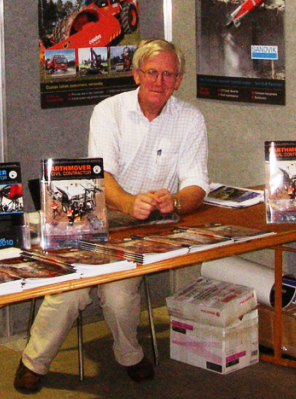That period in the early 1960s changed my life too. Before I went there I had thought of England as being almost the same as Australia. I had not been ready for England’s rigid class system and sophisticated cultural diversity.
Distinctly middle class in English eyes I was accepted though; I was just branded in a semi serious way as a “bloody colonial”.
The couple of swinging sixties years I spent in England really opened my eyes to the wider world.
But forward again to 1974. Newly married, I was about to be exposed to city living or should I say suburban Burwood living in Melbourne. I’d previously not spent more than a week or two at a time living in a city and it was initially vaguely oppressive being more or less confined to a suburban block.
It wasn’t always though. I’d borrowed a tractor from my parent’s farm at Benalla and because it was difficult to start, had parked it overnight on the steeply sloping drive of a neighbour - who had just coincidentally bought my parents’ old house near Benalla.
The new Burwood neighbour was so cross about the monster presence on what was soon to be his drive, that I don’t think he ever really spoke to us.
The really big change in 1974 was that within weeks of becoming a married man I landed a journalism job with Stock and Land newspaper in Melbourne.
I’d been offered the job the previous spring when we were selling our Mortlake Hereford stud and I had done the artwork for a half page advertisement to go in Stock and Land.
I had laid Letraset type (remember that miraculous stuff) over a photo I’d taken of the cattle and despite the fact I was told that my type was slightly crooked, the Stock and Land editor must have thought I had potential.
Anyway, in March 1974 I started writing about farming with an article about King Island which I had visited several times in 1973 to list farms for sale.
In the newsroom I did deal not so much with the editor as with a sub-editor and in my case it was two. I very quickly got feed back on what I should be doing and so started a steep learning curve on how to make an impact with words.
I learnt that the essential shape of a story should be an inverted pyramid: the what, when, why, who at the very top, gradually tailing down to the less important stuff. That means if a cut is made to a story, it will be from the bottom and only relatively unimportant material will disappear.
I had always been a keen photographer so complementing stories with pictures came to me pretty naturally. It was nice to have someone else do all the developing and printing though.
It was the taking of pictures which started a row with a former employee of Stock & Land who had just left to represent The Land newspaper in Victoria. I don’t know whether it precipitated his move, but he had reportedly had a very public punch up with the chief sub editor in the newsroom.
Anyway I was member of the Australian Journalists’ Association and as good union members, we were supposed to have photographers trail along with us rather than take our own pictures.
However at an event at the National Science Centre this objectionable individual, who went on to run Rural Press out of Sydney, started shouting at me from a mezzanine floor for taking pictures.
I never forgave him and when Rural Press bought Stock & Land in 1986, I resigned and took a different road rather than have to work under his bossy and dishonest eye.
My career as a Stock and Land journalist had ended after twelve years, but my life as a journalist has lasted for over four decades since it started in 1974 – the year that made me.
David Palmer
16 November 2015


 RSS Feed
RSS Feed
